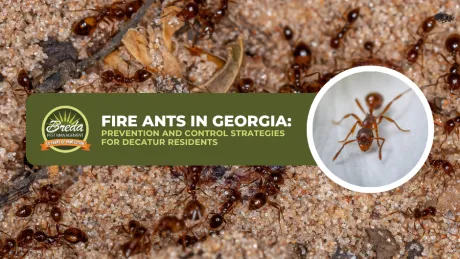We all love Batman's secret lair, the Bat Cave, but it becomes a problem when bats leave their caves and find their way into our homes. Bat colonies can range anywhere from 40 bats to 20,000 bats, which is why it is important to take the necessary steps in removing bats from your home before a small infestation develops into a large problem. We have compiled a guide for homeowners on how to deal with a bat infestation with five simple steps:
- Determine the Quantity of Bats
- Determine the Species of the Bat
- Locate Entry Points into Home
- Apply Removal Methods
- Inspect and Clean
1) Determine the Quantity of Bats
The first step you should always take before proceeding to remove the bats from your home, is to figure out how many bats are in your home. If you have a single bat or a few strays flying around your attic, then it is possible to deal with bat removal without the assistance of a local pest control professional. If you are faced with a medium or large colony of bats that have infested your attic or walls, then it is recommended to immediately contact your local pest control professional for assistance.
2) Determine the Species of the Bat(s)
The next step to take when dealing with a bat infestation is to identify the type of bat that you are dealing with. Different species of bats may require different approaches to removing them based on a variety of reasons. Once you identify the species of the bat that you are dealing with, you can contact your local pest control professional for guidance on how to remove a particular species of bat.
3) Locate Entry Points Into the Home
Make sure you scan the entire home, including the roof, chimney, and walls for entry points. Bat colonies require safe and enclosed areas to sleep and raise their young, which is why they often find their way into our homes. The entry holes can be identified by dirty stains, marks, and droppings from the bats. Bats are able to enter through extremely small holes, so it is important to conduct a thorough examination for any holes and entry points for bats on your property.
4) Apply Removal Methods
There are a variety of methods you can use for removing bats. It is tempting to use a simple poison to remove the bats, but it is ineffective and illegal to poison bats because of the positive roles they play in the ecosystem. While it's not illegal in Georgia, whatever you do, DO NOT use poison as a form of removal for bats. Removal of bats must be done through exclusion. Harming or killing bats increases the risk of diseases for you and your family (PK). Bat houses, repellent devices, and one-way exclusion doors are the best methods for bat removal.
Important Things To Consider
When removing bats from your home without the assistance of a pest control professional, there is an increase in risks for you and your family. Approximately 1% of bats carry rabies, which is still considered a risk when there is a possibility of you or your household receiving a nasty bite. There is also the possibility that the walls of your home are infested by bats. Wall infestation is the most serious type of bat infestation and it is recommended that you immediately contact a pest control professional to handle the infestation and the clean-up process to minimize risks for you and your family.
Bat Houses
Bat houses are a great option if you are worried about possibly harming the bats. This is a popular bat removal product that will cost $20-100 depending on size and materials, but this could potentially save you money in the end depending on the severity of the problem.
Repellents
Repellents tend to work well with bat infestations. Generally, you apply the repellents at entry points and holes where bats have entered into your home to keep them from coming back. The most effective form of bat repellent are ultrasonic devices. These ultrasonic bat repellent devices interfere with the echolocation of the bats and drives them away from your home.
One Way Exclusion Doors
One-way exclusion doors work well when used at the entry points for the bats. It is important to NOT seal entry points while bats are inside. If a bat dies in your home, the body will decompose and create an unpleasant odor. One-way exclusion doors prevent this from happening because they provide the bats a way out of the house, but prevent them from coming back in.
5) Inspect and Clean
Once the bats are removed from their hiding place, it is very important to follow up with a thorough inspection. You should make sure that there are no stragglers or babies left at the site before you start to clean up. The clean up process is crucial to keeping your family's health in good condition. Parasites and rabies are both possible consequences from a bat infestation, but the biggest concern has to do with Bat Guano Disease, also known as Histoplasmosis. Histoplasmosis is an infection of the lungs that is caused by mold spores found on bat waste. Bat droppings are very potent and the mold spores can be breathed in by inhabitants of the house unless they are properly cleaned up. If you have a large bat infestation or a difficult clean up process, it is strongly recommended that you contact a pest control professional for assistance with ensuring safety and good health for you and your family.
Learn more about how to keep wildlife out of your home in our free guide The Ultimate Guide To Wildlife Infestation.



